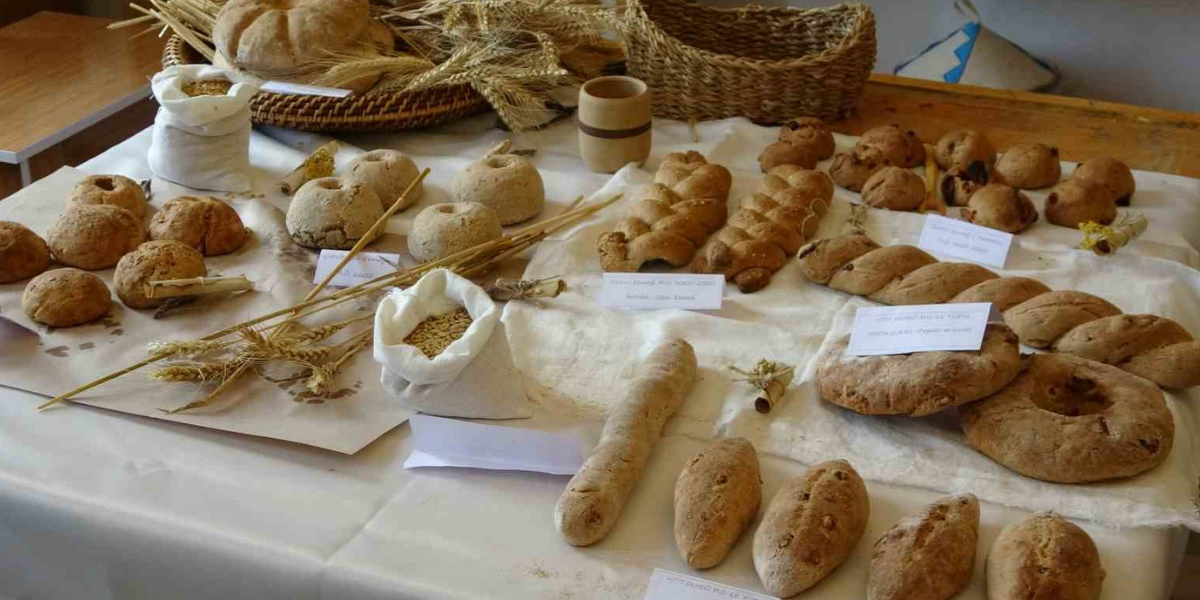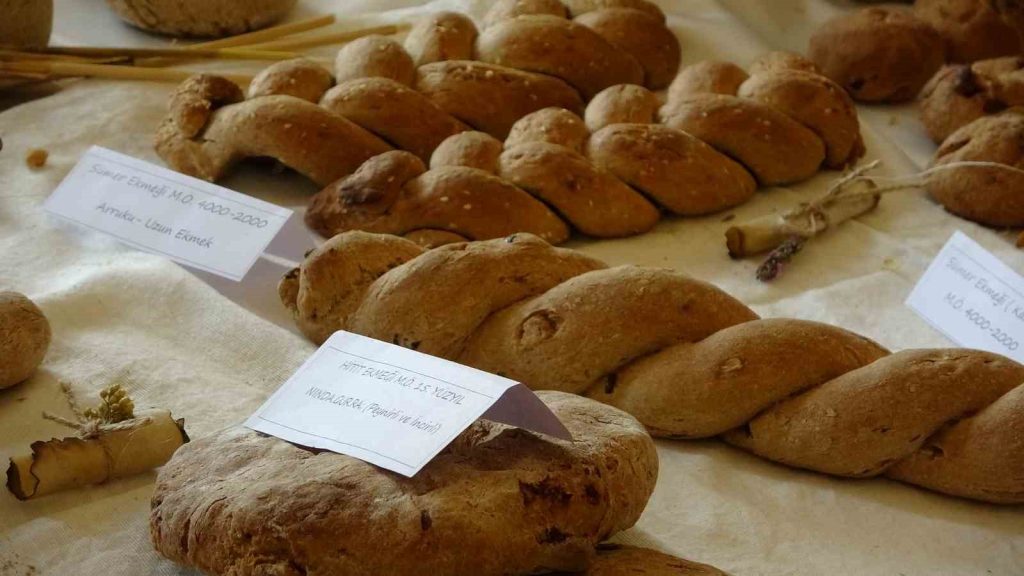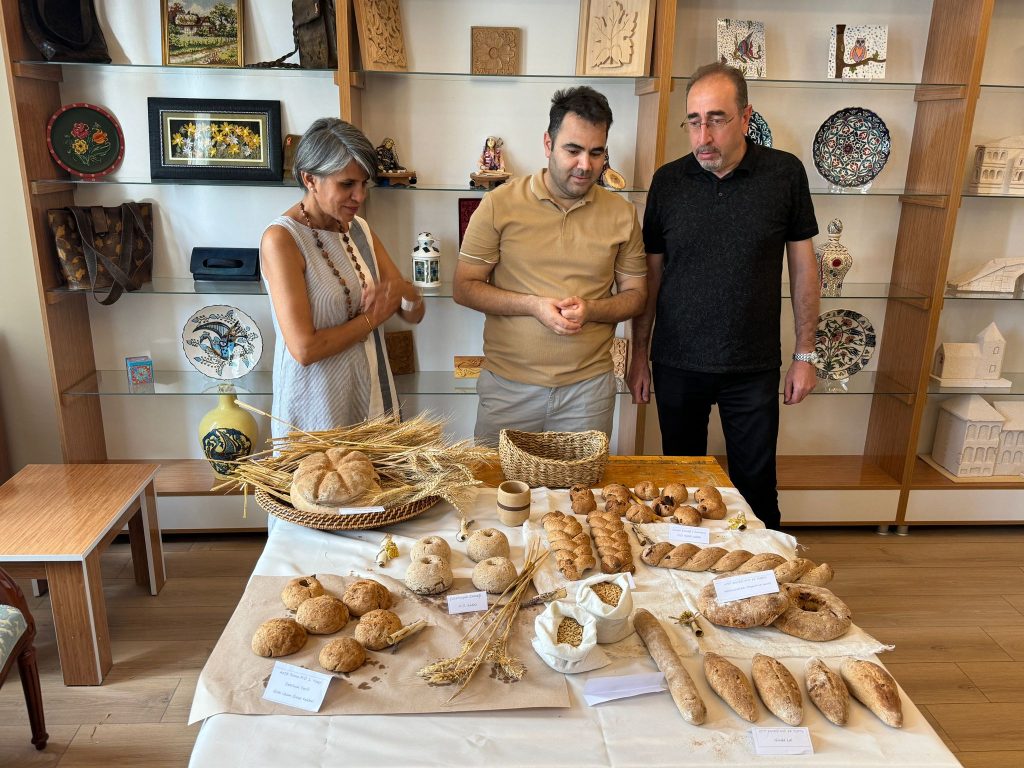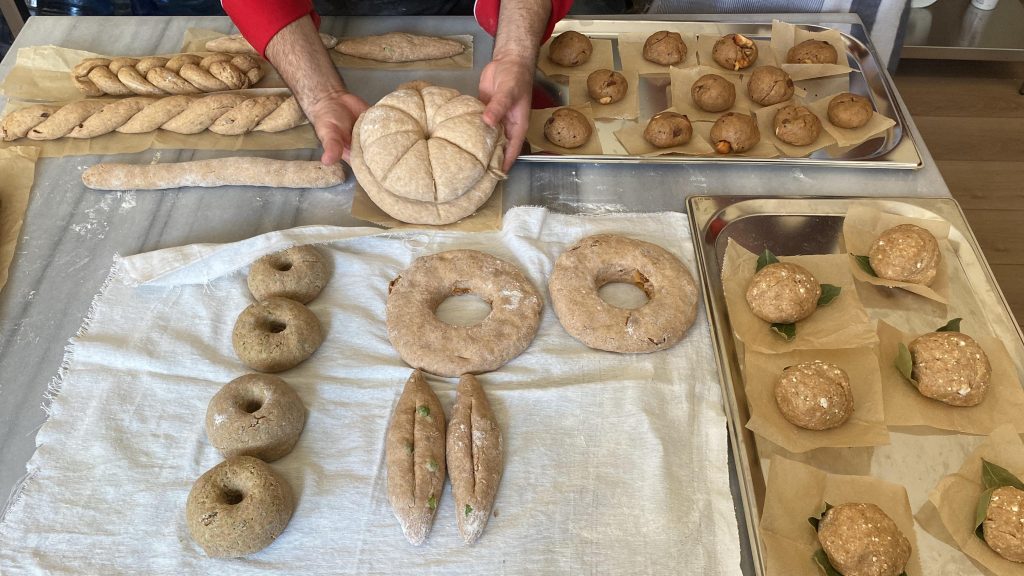
Using 3,500-year-old tablets, bread from the Hittite, Sumerian and Roman periods was baked
Bread is an indispensable food source in every period of history. In Anatolia, home to the transition to settled life, bread is considered both a foodstuff and a sacred food offered to the gods.
The Hittites are a Bronze Age civilization that stands out with its bread making and diversity. Hundreds of tablets unearthed in the capital Hattusa include dozens of bread varieties. From daily bread to dozens of breads offered as offerings to the gods.
Archaeologists from Yozgat Bozok University’s Department of Archaeology have succeeded in re-baking eight of the breads of thousands of years ago.

Yozgat Bozok University, within the framework of the “Breads of Antiquity Come to Life Again” project, 8 types of bread from the Hittite, Sumerian and Roman periods were re-baked using 3,500-year-old tablets found in archaeological excavations.
📣 Our WhatsApp channel is now LIVE! Stay up-to-date with the latest news and updates, just click here to follow us on WhatsApp and never miss a thing!!

Under the supervision of Assoc. Prof. Dr. Serkan Erdoğan, Archaeology Department student Davut Hatip prepared the ancient breads he chose as his graduation thesis in practice.
The flour of the breads was obtained by grinding in a stone mill. The breads containing cheese, honey, figs, peas, raisins, dried apples, whole wheat flour, sourdough and hazelnuts were presented.
Davut Hatip said, “In the 3,500-year-old Hittite cuneiform tablets, the recipe of the bread is not given, but the ingredients are mentioned, and we created this recipe based on this information. In the research I did in my undergraduate thesis, it is stated that these breads keep you full, especially Roman soldiers preferred these breads when going on long journeys and wars, and that they were produced for them.

We also found out that these breads were produced for Hittite soldiers because they were nutritious and healthy. We have now produced 8 types of bread.”
Stating that the breads produced include the 8,600-year-old Çatalhöyük bread, Hatip said, “We produced Sumerian bread; these were two types and were consumed by the priests in the temple. Then we produced three types of Hittite bread.”
Assoc. Prof. Dr. Serkan Erdoğan said, “We made this presentation in order to introduce the bread culture of the Hittites and Romans who ruled in Yozgat geography and to reveal their connections with today. Based on Hittite and Mesopotamian cuneiform sources, an important part of the breads here were produced. In addition, we have Çatalhöyük bread that goes back to prehistory. At the same time, a type of bread from the Roman period is also produced here.”
Cover Photo: Yozgat Bozok University
You may also like
- A 1700-year-old statue of Pan unearthed during the excavations at Polyeuktos in İstanbul
- The granary was found in the ancient city of Sebaste, founded by the first Roman emperor Augustus
- Donalar Kale Kapı Rock Tomb or Donalar Rock Tomb
- Theater emerges as works continue in ancient city of Perinthos
- Urartian King Argishti’s bronze shield revealed the name of an unknown country
- The religious center of Lycia, the ancient city of Letoon
- Who were the Luwians?
- A new study brings a fresh perspective on the Anatolian origin of the Indo-European languages
- Perhaps the oldest thermal treatment center in the world, which has been in continuous use for 2000 years -Basilica Therma Roman Bath or King’s Daughter-
- The largest synagogue of the ancient world, located in the ancient city of Sardis, is being restored











Leave a Reply